If you’ve ever suffered from ‘wide awake mode’ just when you’ve decided to fall asleep, you’ll know how difficult it is to then drift off. For some of us, this happens occasionally, but for a third of us, this happens one night a week, according to NICE (National Institute of Healthcare and Excellence).
So what is keeping you awake when everyone else is in the land of nod? There are various reasons, from stress, too much coffee, and screen time. Even if there are unavoidable factors such as excessive noise in your neighbourhood, there are ways to help you nod off. We’ll share our advice on how to fall asleep quickly, as well as how to establish a bedtime routine for adults and how to incorporate good sleep habits before hitting the hay.

Why falling asleep fast can be a challenge
Despite bedtime being the hour of the day when we should be putting our thoughts aside, they are the most productive. It’s not only stress stopping you from getting seven to eight hours of sleep, but it could also be your own lifestyle.
Having a night in seems conducive to a good sleep; however, if you’re staying up late to watch a film longer than your normal bedtime, this upsets your circadian rhythm (internal body clock). An active social life of theatre-going, pubbing and gigs can upset it. Your internal rotation won’t thank you for postponing your sleep or lying in longer on the weekend.
Alcohol can help you relax, but it disrupts your REM sleep, causing you to wake up more often. Common culprits like drinking coffee in the late afternoon or looking at your phone both delay melatonin, which is the hormone released to help you fall asleep.
What are the most common reasons for insomnia?
A number of reasons cause sleeplessness, but the number one offender is worry. Cortisol levels in the brain are higher when anxious, making you more alert. Other reasons for sleep delay are:
- Caffeine
- Alcohol
- Nicotine
- Noisy environments
- Screen blue light
- An inconsistent sleep schedule
- Late meals
- Pain
- Sleep disorders such as sleep apnea
So how do you put unwelcome thoughts to bed? Introduce a sleep routine by going to bed and waking up at the same time, even on the weekend. It’s a good idea to give yourself an hour of winding down time before you sleep – this could involve journaling, reading or listening to relaxing music, but you should avoid watching television or looking at a screen. A consistent routine and good sleep habits are important methods of getting to sleep quickly.

How to fall asleep fast
Tired of not being able to fall asleep? If your sleep debt is at an all-time high, there are tried and tested bedtime habits for good sleep. We’ve provided some easy ways to access bedtime utopia below.
The military method
Relaxation techniques are proven to help you feel sleepy. Deep breathing is very effective; in particular, the Military Method has a proven success rate. When it was introduced in WWII, within six weeks of practice, 96% of pilots were able to sleep despite being under extremely stressful circumstances. The method involves lying comfortably without any tension in the body, dropping the shoulders and letting your hands drop to the side of your body. Take deep breaths, then exhale and clear your mind of intrusive thoughts for 10 seconds, imagining a pleasant scene.
4-7-8 technique
Another breathing technique, which originates from yogic practices of pranayama, is known as 4-7-8. Calming the nervous system and slowing the heart rate, this method works on the principles of meditation. If you have asthma or a respiratory condition, you should consult your doctor before trying this breathing practice. The steps are below:
- Start by exhaling completely through your mouth
- Then, inhale quietly through your nose for a count of four seconds
- Hold your breath for seven seconds
- Exhale slowly through your mouth for eight seconds
- This cycle can be repeated three to four times
Paradoxical intention
Reverse psychology works. Telling yourself not to sleep may sound like something you shouldn’t do, but it takes the pressure off you wanting to fall asleep. It’s called paradoxical intention. And telling yourself not to means you eventually do!
Create an environment for sleep
Your surroundings may be preventing you from getting sleep, so creating a relaxing environment is the best way to help you fall asleep. Our sleep expert, Dr Seeta, says, “Falling asleep quickly is a reflection of a calm nervous system, a stable circadian rhythm, and an environment that supports restorative rest. Addressing these foundations from both a physiological and therapeutic standpoint can transform your sleep patterns over time."
Here are some simple ways to create a suitable sleep environment without spending a lot of money or becoming a master in feng shui!
- Your room should be three things: dark, quiet and cool. The ideal temperature for your bedroom is 60-67 degrees Fahrenheit. Invest in blackout curtains, or try an eye mask. Our hypoallergenic Bamboo eye mask blocks out ambient light, and it's super soft and light on the skin.
- Comfort is key to unlocking sleep. Make sure your sleep set-up is suited to your individual needs. Our bamboo mattresses are highly breathable, supportive and designed to help transport you to dreamland. Super soft cloud-like cushioning, our bamboo pillows take you straight to your comfort zone. Don’t forget your duvet could be getting in the way of you and a good night’s sleep, so invest in our fluffy and cosy Cloud Bamboo Duvet. It’s available in both Summer and all-year-round options.
- Watching a film or show can be relaxing, but the screen emits a blue light that prevents the release of the sleepy hormone, so swap your streaming for reading or listening to music an hour before bed.
- Introduce a sleep schedule and stick to it! Go to bed at the same time every night and also wake up at the same time every single day. For it to be most effective, you’ll need to forgo your Saturday and Sunday lie-in (sorry).
- Creating a sleep haven means reducing light exposure and ridding it of distractions. Keep your home office and bedroom separate, and put your mobile phone in another room during sleeping hours. A dimmer switch or lamps create low lighting conducive to relaxation.
- Mindfulness helps you to switch off. This can take the form of passive activities such as journaling, colouring in and meditation. Another mindful practice called ‘visualisation’ is where you visualise a serene place, such as the countryside or a waterfall, when you close your eyes. A study from the University of Oxford found that people who engaged in this technique were more likely to fall asleep quickly.
- Meditation has been practised for thousands of years and helps you to feel more relaxed in both body and mind. If you’re unsure how to meditate, you can find lots of guided meditations online. There’s also PMR (progressive muscle relaxation), which is good for those who suffer from insomnia.
Here are the basic steps for employing progressive muscle relaxation meditation at night:
- Lie in bed, close your eyes, and begin slowly inhaling and exhaling deep breaths.
- Tense your face muscles for 10 seconds. Release the tension and take several deep breaths.
- Next, tense your shoulder muscles for 10 seconds before releasing. Inhale and exhale deeply.
- Repeat these steps for other muscle groups throughout your body, starting with your shoulders and continuing through to your feet, omitting any areas where you feel pain.

Creating a bedtime routine for adults
A bedtime routine is not just for children; it can be effective in helping adults to fall asleep quickly. A bedtime routine for adults doesn’t have to be too complicated; think of it as a preparation for ‘falling asleep mode’. Here are our suggestions on bedtime habits for good sleep:
- Soft lighting
- Changing into comfortable sleepwear
- A skincare regime or bathtime
- Reading or journaling
- Stretching or a gentle yoga practice
Choose one or all of these approaches to help welcome sleep to your space. It can be down to personal preference as to which one aids in your own relaxation. Our Health and Wellbeing expert, Rose Mahon, explains her wind down routine, “If time allows, I love a nighttime bath, a lovely soak followed by comfy PJs, my skincare routine, bedtime tea and a podcast in bed. We love an early night so this is normally all done and I’m in bed no later than 10…..rock and roll!”
Good sleep habits that support falling asleep faster
The good news is that by making small changes throughout your day, you can fall asleep quickly. It’s important to limit your caffeine intake; don’t drink tea or coffee after 3 p.m., as it stays in your system for eight hours. Also, make time for exercise each day, preferably in the morning. Go outside so you’re exposed to natural light – this also tops up your vitamin D. If you need to nap, make it early in the day and not close to your bedtime as you’ll find it harder to go to sleep.
What to avoid if you want to fall asleep quickly
Our daily screentime has increased over the years with our daily use of smartphones, tablets and laptops, which begs the question, can screen time affect sleep? The short answer is yes. And the long answer is that the reason for sleep interference from screen time is due to the blue light. This disrupts your melatonin production, keeping you in an alert state. If you work at a screen for your job, you should avoid them for up to an hour before your designated bedtime.
Avoid heavy meals before bedtime, so if you enjoy a hot curry or you like a dessert after dinner, make sure you don’t eat them just before bedtime, as they stimulate your nervous system. Spicy foods raise your body temperature and can cause stomach reflux when you lie down, providing discomfort.
It can be tempting to check emails in bed or even have a cup of tea before bedtime, but if you struggle with drifting off, they don’t help. Arguments or stressful conversations can stop you from resting, as these will go through your mind, keeping you awake. Try to resolve these before bedtime to create peace of mind.
Conclusion
Sleep patterns change depending on our age and stage in life. The long-term effects of sleeplessness can have a negative impact on your health, increasing the risk of depression, weight gain and heart problems.
Cutting back on caffeine or alcohol, and or winding down with meditation, are simple and effective ways to prevent insomnia. Reducing screentime and swapping your film watching for reading are also beneficial methods for falling asleep quickly.
We suggest you experiment with our suggestions in this blog post to find the best one for you. Introducing small yet significant changes to your day-to-day life can help overcome insomnia, so you can feel healthier and happier. However, if insomnia persists even when you’ve tried a different routine and changed your lifestyle habits, you should consult a doctor about this condition.
FAQ
1. What is the fastest way to fall asleep?
The fastest way is to calm your nervous system and remove sleep blockers: dim the lights an hour before bed, put screens away, try a simple breathing routine (like 4-7-8), and keep your room cool (16–20°C). A consistent bedtime and a relaxing wind-down (reading, stretching) also help you drift off quickly.
2. How can I fall asleep in 5 minutes or less?
Lie on your back, relax your jaw and shoulders, and try the Military Method: release tension from face → shoulders → arms → legs, then visualise a calm scene for 10 seconds while breathing slowly. If thoughts pop up, notice them and return to your breath.
3. Which breathing techniques help you fall asleep quickly?
Two reliable options:
- 4-7-8: inhale 4 seconds, hold 7, exhale 8 (repeat 3–4 cycles).
- Box breathing: inhale 4, hold 4, exhale 4, hold 4.
Both slow your heart rate, lower stress, and prime your body for sleep.
4. What should I avoid before bed to sleep faster?
Avoid caffeine after mid-afternoon, alcohol late at night, heavy or spicy meals close to bedtime, intense workouts late in the evening, and all screens for at least 60 minutes (blue light delays melatonin). Postpone stressful conversations and doom-scrolling, too.
5. How can I create the perfect bedroom environment for better sleep?
Keep it dark, quiet, and cool. Use blackout curtains or a sleep mask, reduce noise (earplugs, white noise), and set the temperature around 16–20°C. Choose breathable, moisture-wicking bedding (e.g., bamboo), a supportive pillow/mattress, and soft, warm lighting to signal wind-down.
Fact-checked by: Dr Seeta Shah

![[MattressTopper] Panda London Memory Foam Bamboo Mattress Topper package box](http://pandalondon.com/cdn/shop/files/Bamboo_Mattress_Topper_Package_Box.webp?v=1742301823&width=1500)
![[MattressTopper] Panda London Memory Foam Bamboo Mattress Topper on the floor](http://pandalondon.com/cdn/shop/products/Panda-Memory-Foam-Bamboo-Mattress-Topper-Yoga-e1624045454555.jpg?v=1758795458&width=1000)
![[MattressTopper] Bamboo Mattress Topper Lifestyle Image with Memory Foam Pillows Product Page](http://pandalondon.com/cdn/shop/files/Bamboo_Mattress_Topper_Lifestyle_Image_with_Memory_Foam_Pillows_Product_Page.webp?v=1758795458&width=800)
![[MattressTopper] Bamboo Mattress Topper Lifestyle Image with Bamboo Pillows In the Garden room Product Page](http://pandalondon.com/cdn/shop/files/Bamboo_Mattress_Topper_Lifestyle_Image_with_Bamboo_Pillows_In_the_Garden_room_Product_Page.webp?v=1758795458&width=800)
![[MattressTopper] Panda London Memory Foam Bamboo Mattress Topper side](http://pandalondon.com/cdn/shop/files/Mattress_Topper_Isolated_-_resized.jpg?v=1758795458&width=800)
![[HybridMattressPro] Hybrid_Bamboo_Mattress_Pro_Product_Image_2026](http://pandalondon.com/cdn/shop/files/Hybrid_Bamboo_Mattress_Pro_Product_Image_2026.webp?v=1764944771&width=1000)
![[HybridMattressPro] Breathable Hybrid Bamboo Mattress](http://pandalondon.com/cdn/shop/products/Breathable-Hybrid-Bamboo-Mattress.jpg?v=1764944771&width=1920)
![[HybridMattressPro] Hybrid Bamboo Mattress Pro Cover Zip](http://pandalondon.com/cdn/shop/files/Hybrid_Bamboo_Mattress_Cover.jpg?v=1764944771&width=800)
![[HybridMattressPro] Panda Hybrid Bamboo Mattress Pro](http://pandalondon.com/cdn/shop/files/Hybrid_Bambo_Memory_Foam_Mattress_-_BioCell_Foam_x.jpg?v=1764944771&width=800)
![[HybridMattressPro] Couple on a Hybrid Bamboo Mattress Pro](http://pandalondon.com/cdn/shop/files/Hybrid_Bamboo_Mattress_Couple.jpg?v=1764944771&width=800)
![[CloudDuvet] Panda London The Cloud Bamboo Duvet Packaging](http://pandalondon.com/cdn/shop/products/Panda-London-The-Cloud-Bamboo-Duvet-Panda-Life-scaled_00a651ad-4ca3-4105-b520-12a94c1a4f71.jpg?v=1713363286&width=1920)
![[CloudDuvet] Panda London The Cloud Bamboo Duvet Rolled](http://pandalondon.com/cdn/shop/products/Duvet-Listing-Images03.jpg?v=1764079307&width=1000)
![[CloudDuvet] Panda London The Cloud Bamboo Duvet Girl Huggin a Duvet on the Bed](http://pandalondon.com/cdn/shop/files/Cloud_Bamboo_Duvet_-_Lady_Hugging_it_on_Bed_LifestyleImage.jpg?v=1764079307&width=1000)
![[CloudDuvet] Panda London The Cloud Bamboo Duvet Guy In the Air with Cloud Bamboo Duvet](http://pandalondon.com/cdn/shop/files/GuyonaHybridBambooMattresswithCloudDuvet.jpg?v=1764079307&width=2000)
![[CloudDuvet] Panda Cloud Duvet Winter on the bed lifestyle image](http://pandalondon.com/cdn/shop/files/Panda_Cloud_Duvet_Winter_on_the_Bed_Lifestyle-1_image.jpg?v=1764079307&width=1000)
![[BBWhite] White 100% Bamboo Bedding](http://pandalondon.com/cdn/shop/files/Pure_White_Full_Bed.webp?v=1719581797&width=1000)
![[BBWhite] White 100% Bamboo Bedding Texture](http://pandalondon.com/cdn/shop/files/100_Bamboo_Bedding_-_Pure_White_-_Close_Up_02.webp?v=1762879591&width=1000)
![[BBWhite] White 100% Bamboo Bedding Woman in bed sleeping](http://pandalondon.com/cdn/shop/files/100-Bamboo-Bedding-Set-Pure-White-BB.webp?v=1762879591&width=768)
![[BBWhite] White 100% Bamboo Bedding Woman Duvet cover buttons](http://pandalondon.com/cdn/shop/files/hand_and_buttons_1.webp?v=1762879591&width=1000)
![[BBWhite] White 100% Bamboo Bedding Woman in bed looking and smiling-](http://pandalondon.com/cdn/shop/files/SatonMadeBed-White100_BambooBedding-white_-_BB_SideShot1000x1000.webp?v=1762879591&width=980)
![[BBUrbanGrey] Urban Grey 100% Bamboo Bedding](http://pandalondon.com/cdn/shop/files/Made_Bed_-_Urban_Grey_-_Wide_Shot_2_1_1.webp?v=1762880019&width=1000)
![[BBUrbanGrey] Cloud Duvet Urban Grey 100% Bamboo Bedding Set](http://pandalondon.com/cdn/shop/files/Cloud_Duvet_-_Grey_-_Close_up_2.webp?v=1762880019&width=1000)
![[BBUrbanGrey] Urban Grey 100% Bamboo Bedding Set Woman sitting on the bed](http://pandalondon.com/cdn/shop/files/Sat_in_Bed_-_Grey_100__Bamboo_Bedding_-_Wide_Shot.webp?v=1762880019&width=1000)
![[BBUrbanGrey] Urban Grey 100% Bamboo Bedding Set Woman Duvet buttons Panda London](http://pandalondon.com/cdn/shop/files/hand_buttons_grey_bedding_1.webp?v=1762880019&width=1000)
![[BBUrbanGrey] Woman Sitting on the Bamboo Bedding with coffee](http://pandalondon.com/cdn/shop/files/SatonMadeBed-White100_BambooBedding-SideShot1000x1000.jpg?v=1762880019&width=1000)
![[BBNavyBlue] Deep Sea Navy Blue 100% Bamboo Bedding](http://pandalondon.com/cdn/shop/files/Made_Bed_-_Navy_-_Wide_Shot_3_copy.webp?v=1762879591&width=1000)
![[BBNavyBlue] Deep Sea Navy Blue 100% Bamboo Bedding Texture](http://pandalondon.com/cdn/shop/files/Cloud_Duvet_-_Navy_-_Close_up_2.webp?v=1762880019&width=1000)
![[BBNavyBlue] Deep Sea Navy Blue 100% Bamboo Bedding Woman Sitting on the bed](http://pandalondon.com/cdn/shop/files/Sat_Up_in_Bed_-_Navy_100__Bamboo_Bedding_-_Hands_on_Bed.webp?v=1762880019&width=1000)
![[BBNavyBlue] Deep Sea Navy Blue 100% Bamboo Bedding Duvet Cover Buttons](http://pandalondon.com/cdn/shop/files/Cloud_Duvet_Cover_Buttons_-_Deep_Sea_Navy.webp?v=1762880019&width=1000)
![[BBNavyBlue] Deep Sea Navy Blue 100% Bamboo Bedding Woman sitting on the bed looking away](http://pandalondon.com/cdn/shop/files/SatonMadeBed-White100_BambooBedding-SideShot1000x1000-001.webp?v=1762880019&width=980)
![[BBPink] Vintage Pink Blue 100% Bamboo Bedding](http://pandalondon.com/cdn/shop/files/Made_Bed_-_Pink_-_Wide_Shot_copy.webp?v=1762879591&width=1000)
![[BBPink] Vintage Pink Texture 100% Bamboo Bedding](http://pandalondon.com/cdn/shop/files/Cloud_Duvet_-_Pink_-_Close_up_2.webp?v=1762880019&width=1000)
![[BBPink] Vintage Pink Woman Sitting on the 100% Bamboo Bedding](http://pandalondon.com/cdn/shop/files/Sat_Up_in_Bed_-_Pink_-_Hands_on_Bed.webp?v=1762880019&width=1000)
![[BBPink] Vintage Pink Woman Sitting on the 100% Bamboo Bedding Duvet Cover](http://pandalondon.com/cdn/shop/files/Cloud_Duvet_Cover_Buttons_-_Vintage_Pink.webp?v=1762880019&width=1000)
![[BBPink] Vintage Pink Woman Sitting on the 100% Bamboo Bedding Woman looking far away](http://pandalondon.com/cdn/shop/files/SatonMadeBed-White100_BambooBedding-SideShot1000x1000-001_Vintage_Pink.webp?v=1762880019&width=980)
![[BBGrey] Light Grey 100% Bamboo Bedding](http://pandalondon.com/cdn/shop/files/Made_Bedding_in_Bedroom_-_Urban_Grey_-_Wide_Shot.webp?v=1762879591&width=1000)
![[BBGrey] Light Grey 100% Bamboo Bedding texture](http://pandalondon.com/cdn/shop/files/Texture17.webp?v=1762880019&width=1000)
![[BBGrey] Light Grey 100% Bamboo Bedding with Woman smiling](http://pandalondon.com/cdn/shop/files/Sat_Up_in_Bed_-_Grey_-_Hands_on_Bed.webp?v=1762880019&width=1000)
![[BBGrey] Light Grey 100% Bamboo Bedding with Duvet Cover buttons](http://pandalondon.com/cdn/shop/files/Cloud_Duvet_Cover_Buttons_-_Quiet_Grey.webp?v=1762880019&width=1000)
![[BBGrey] Light Grey 100% Bamboo Bedding with Woman smiling and sitting coffee](http://pandalondon.com/cdn/shop/files/SatonMadeBed-White100_BambooBedding-SideShot1000x1000-002-_Grey.webp?v=1762880019&width=980)
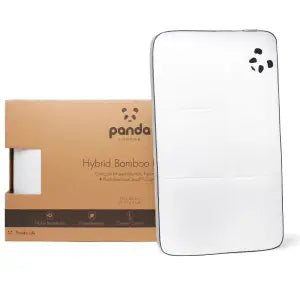 Hybrid Bamboo Pillow
Hybrid Bamboo Pillow Memory Foam Bamboo Pillow
Memory Foam Bamboo Pillow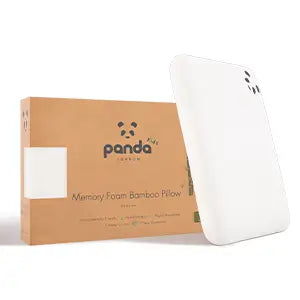 Kids Memory Foam Bamboo Pillow
Kids Memory Foam Bamboo Pillow Baby Memory Foam Bamboo Pillow
Baby Memory Foam Bamboo Pillow Panda Cloud Duvet
Panda Cloud Duvet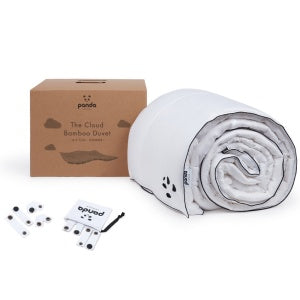 Bamboo Summer Duvet
Bamboo Summer Duvet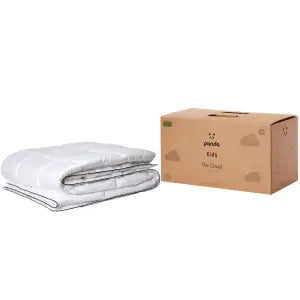 Kids Cloud Duvet
Kids Cloud Duvet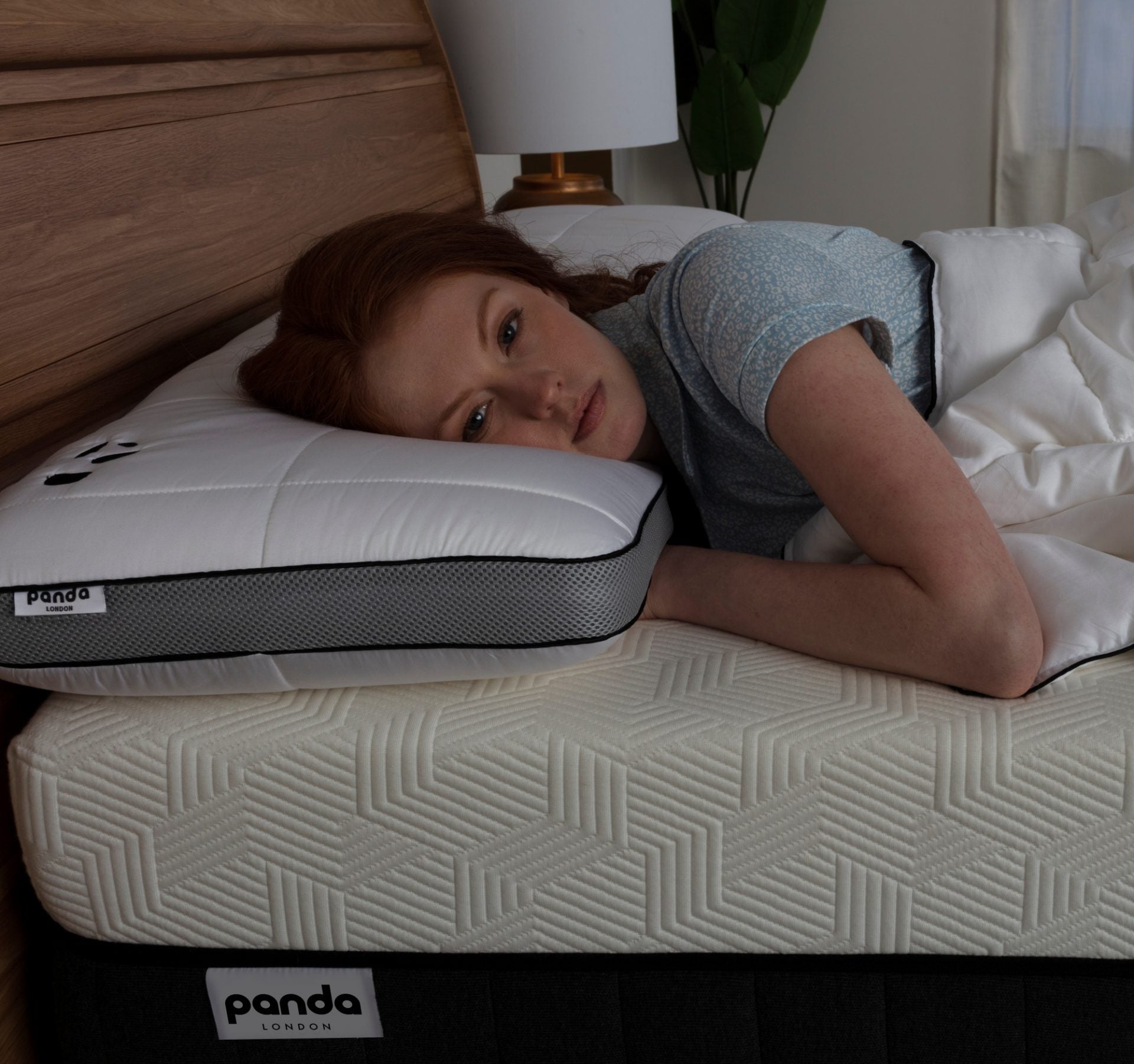
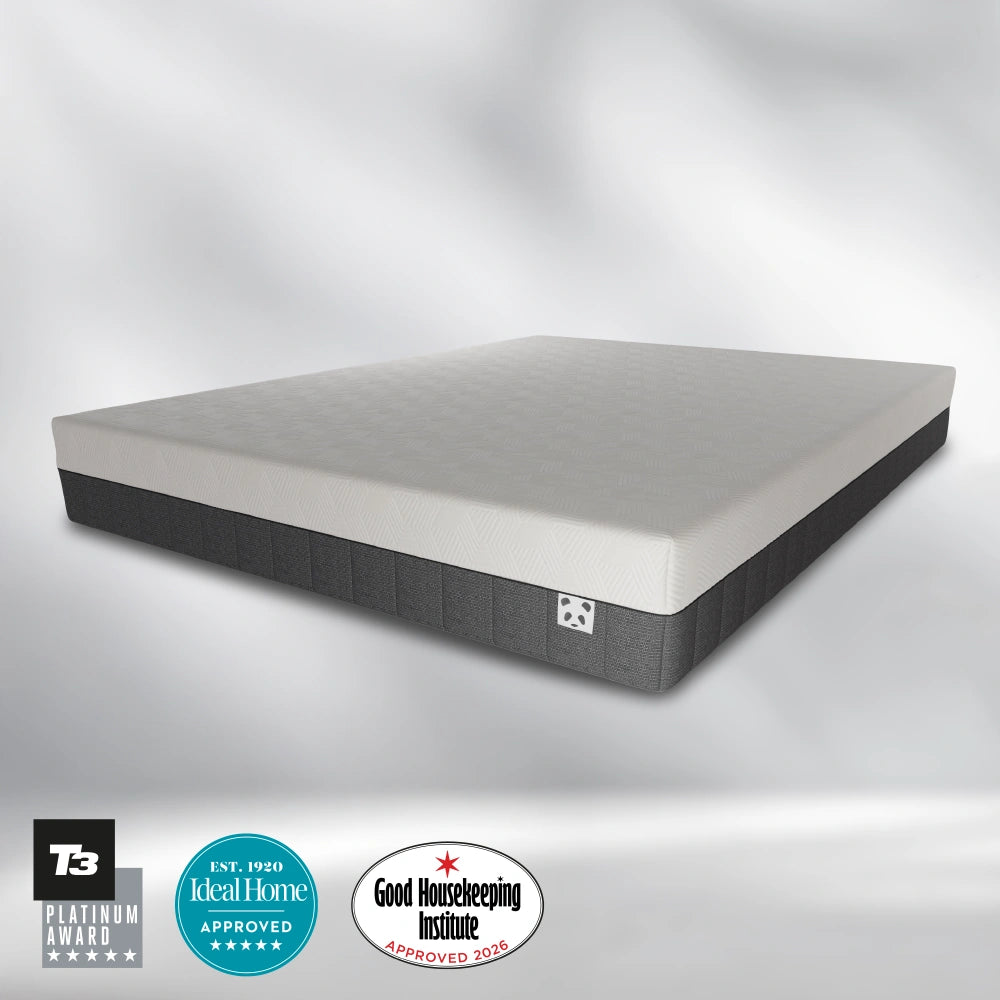
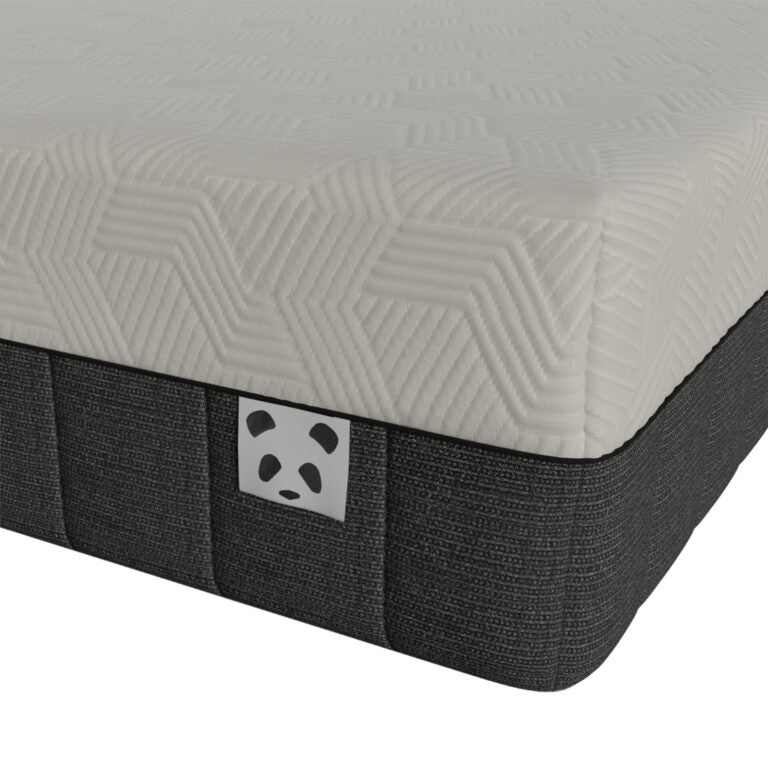

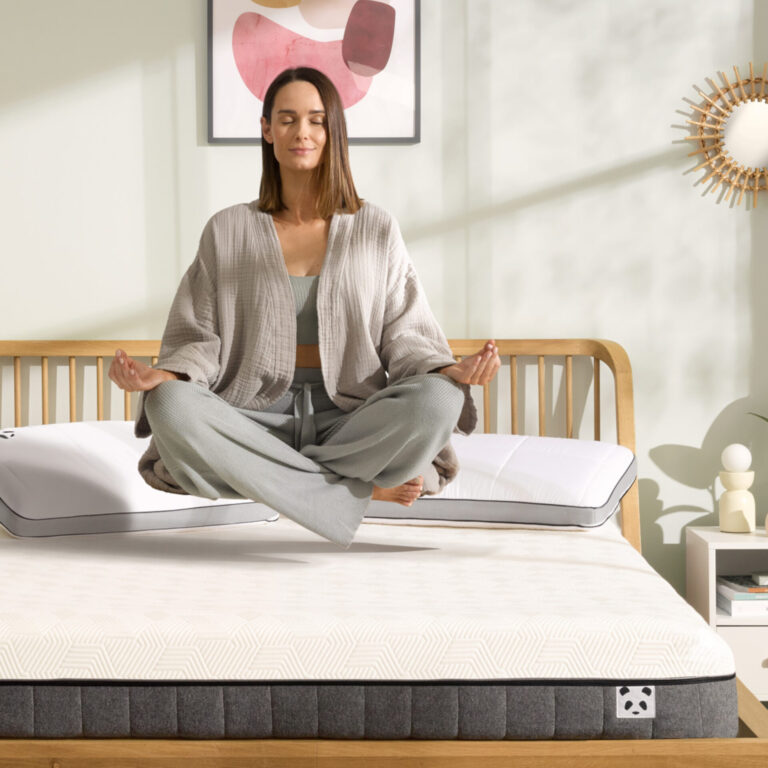
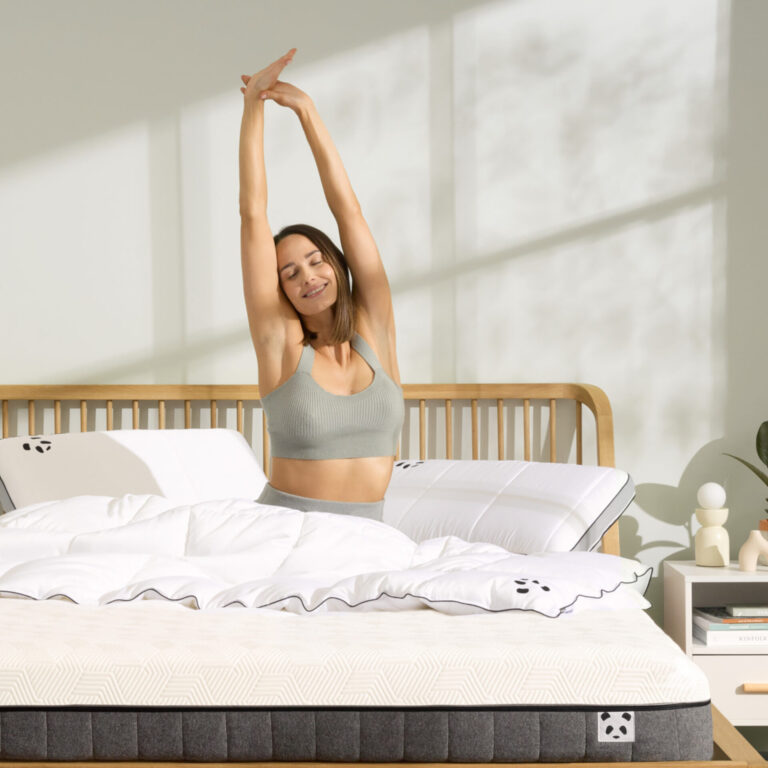
![[GreyEyeMask] Panda London Bamboo Grey Eye Mask](http://pandalondon.com/cdn/shop/files/Grey_Eye_Mask_01.jpg?v=1718269260&width=1000)
![[GreyEyeMask] Panda London Bamboo Grey Eye Mask Full](http://pandalondon.com/cdn/shop/files/Grey_Eye_Mask_02.jpg?v=1718269260&width=1000)
![[GreyEyeMask] Panda London Bamboo Grey Eye Mask Package](http://pandalondon.com/cdn/shop/files/Grey_Eye_Mask_03.jpg?v=1718269259&width=1000)
![[BlackEyeMask] Panda London Bamboo Black Eye Mask Package](http://pandalondon.com/cdn/shop/files/Black_Eye_Mask_01.jpg?v=1718269260&width=870)
![[BlackEyeMask] Panda London Bamboo Black Eye Mask Full](http://pandalondon.com/cdn/shop/files/Black_Eye_Mask_02.jpg?v=1718269259&width=1000)
![[BlackEyeMask] Panda London Bamboo Black Eye Mask Full Package](http://pandalondon.com/cdn/shop/files/Black_Eye_Mask_03.jpg?v=1718269259&width=1000)
![[VintagePink] Pink_Eye_Mask_01](http://pandalondon.com/cdn/shop/files/Pink_Eye_Mask_01.jpg?v=1718269259&width=909)
![[VintagePink] vintage-pink Panda London Bamboo Eye mask](http://pandalondon.com/cdn/shop/files/Pink_Eye_Mask_02.jpg?v=1718269260&width=1000)
![[VintagePink] vintage-pink Panda London Bamboo Eye mask Package Full](http://pandalondon.com/cdn/shop/files/Pink_Eye_Mask_03.jpg?v=1718269259&width=1000)
![[HybridPillow] Hybrid Bamboo Pillow - Mattress Campaign](http://pandalondon.com/cdn/shop/products/Hybrid-Bamboo-Pillow-Mattress-Campaign.jpg?crop=region&crop_height=1615&crop_left=152&crop_top=0&crop_width=1615&v=1750023555&width=1920)
![[HybridPillow] Hybrid Pillow with Panda brand marking](http://pandalondon.com/cdn/shop/products/Hybrid-Pillow_8.jpg?v=1750023555&width=1920)
![[HybridPillow] Couples laying on Hybrid Bamboo Pillows](http://pandalondon.com/cdn/shop/files/Hybrid_Bamboo_Pillow_Product.jpg?v=1750023555&width=1000)
![[HybridPillow] Red Hair Girl sleeping on a Hybrid Bamboo Pillow](http://pandalondon.com/cdn/shop/files/Hybrid_Bamboo_Pillow_-_Red_Hair_Girl_Product.jpg?v=1750023555&width=1000)
![[HybridPillow] Guy Hugging Hybrid Bamboo Pillow](http://pandalondon.com/cdn/shop/files/Hybrid-Bamboo-Pillow-Man-holding-the-pillow-1024x1024_jpg.webp?v=1750023555&width=1024)
